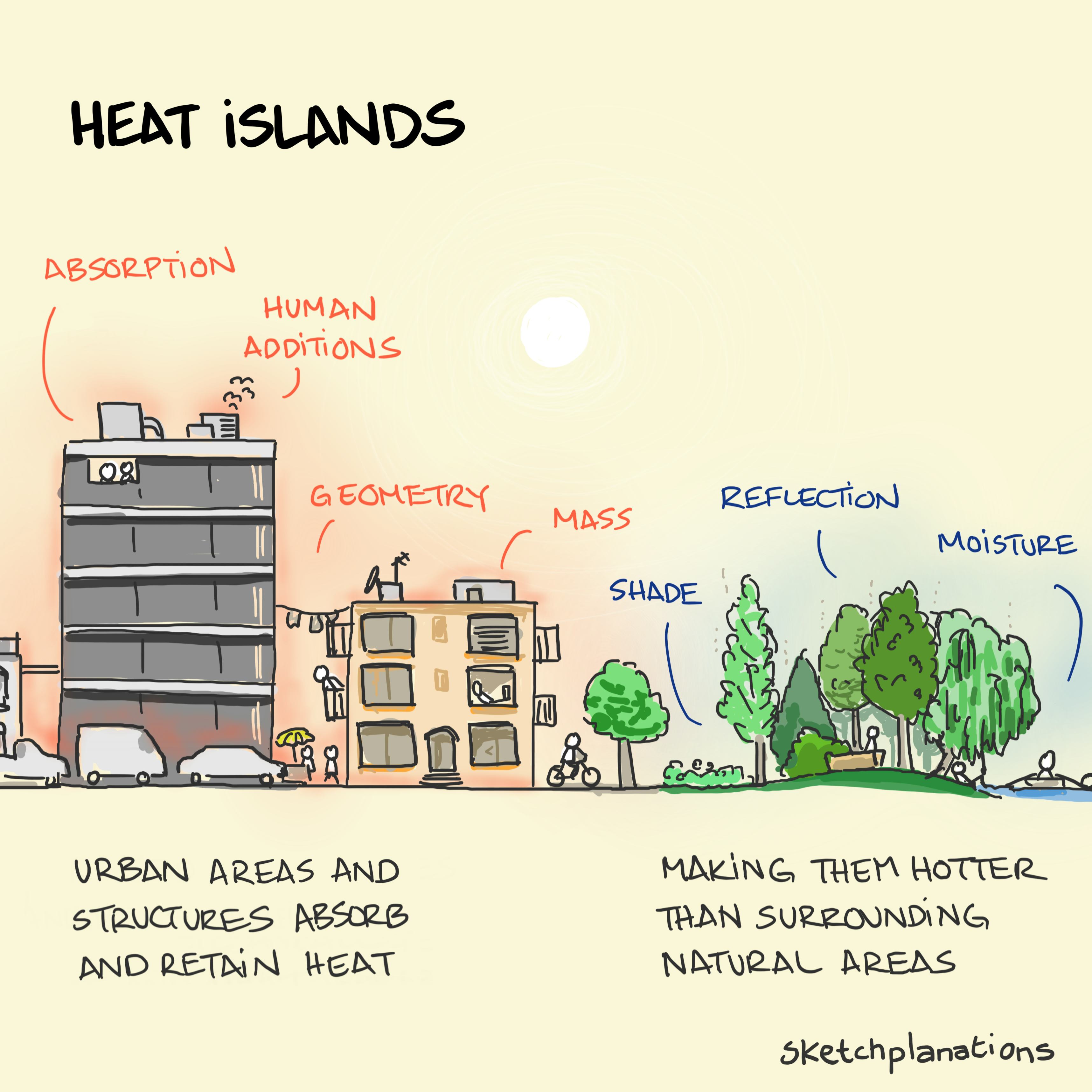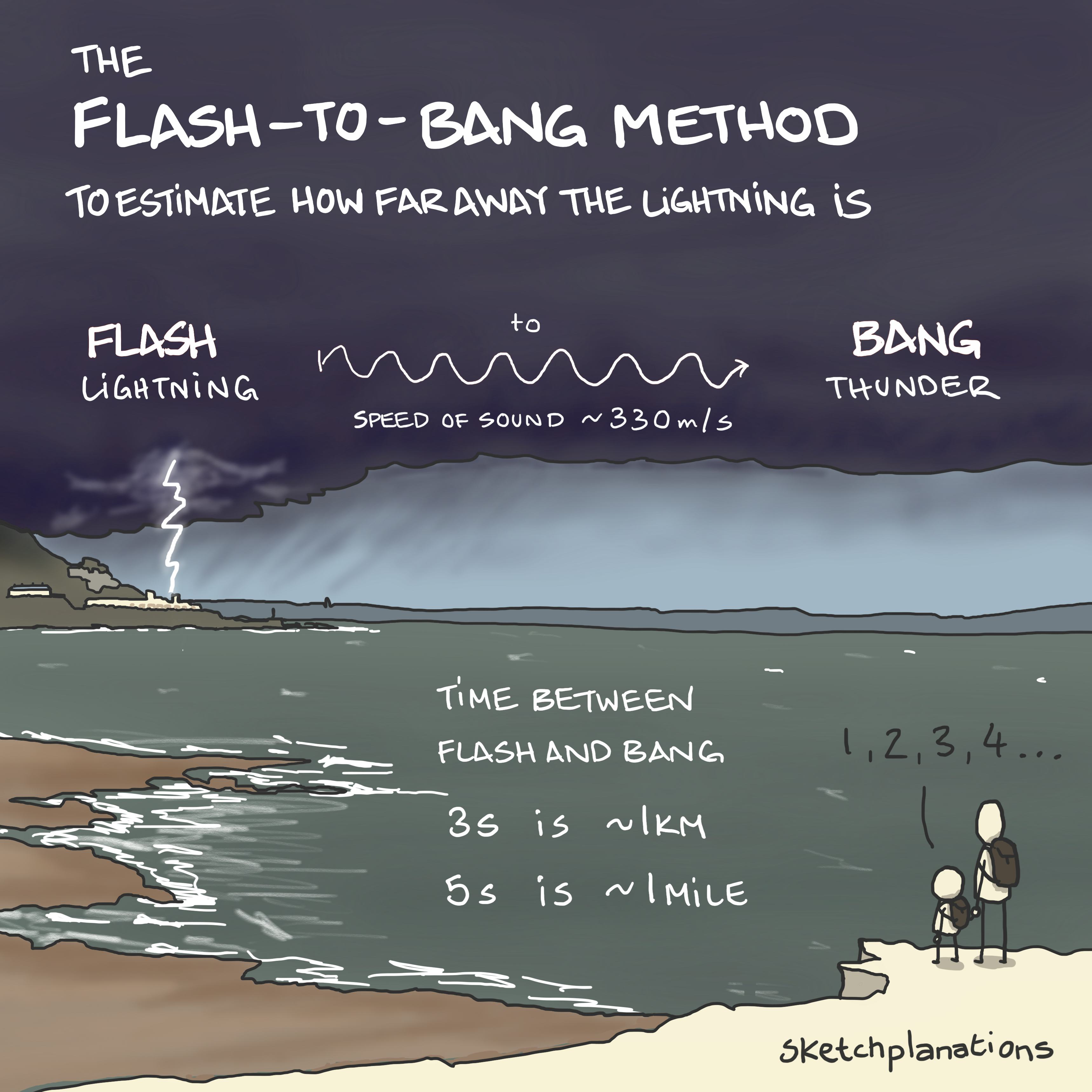Get my new weekly sketch in your inbox
Join over 30,000 people learning something new in a moment each Sunday.

Heat islands
Heat islands are urban areas that can have higher temperatures than surrounding rural areas with more greenery.
Heat islands are caused by a number of factors including:
- the types of materials we use in cities for buildings, pavement, and roads that can absorb more heat than natural surfaces such as leaves or grass
- human additions to the sun's heat such as air conditioning, vehicles, cooking, or machinery
- that shapes of our cities that may restrict airflow to carry heat away
- the mass of our buildings that can absorb heat and release it gradually, even through the night
More natural, often rural areas with greenery may reflect more light, release moisture and provide shade.
There are ways to help reduce the effect of heat islands such as planting more urban trees, or using green roofs.
Deciduous trees have the handy feature of providing shade for a house in the summer while letting light through in the winter when the leaves fall.
A study using 2015 data found that "doubling tree cover in European cities could cut the number of heat-related deaths during summer months by nearly 40 per cent."
Learn more about the heat island effect
You’re welcome to use and share this image and text for non-commercial purposes with attribution. Go wild!
See licence

